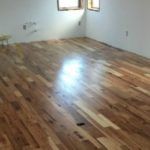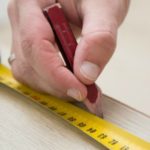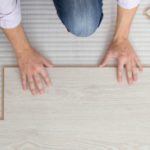Originally posted 21st October 2019
Last updated 6th February 2023
Fix Squeaky Floors: Why Is My Floor Squeaking & How to Stop It?
While squeaking and creaking floorboards can let you know who’s roaming about the house in...
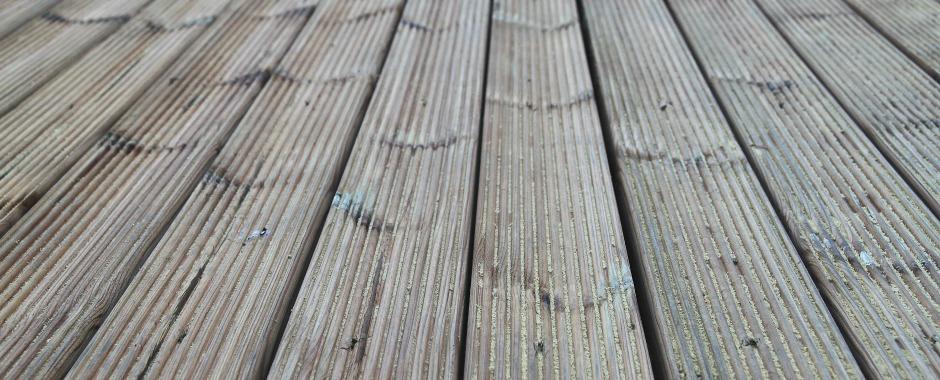
While squeaking and creaking floorboards can let you know who’s roaming about the house in the middle of the night, the constant noises of squeaky floors can become irritating very quickly. So, if your footsteps are starting sound more like a family of mice than a shuffle across a solid wood floor, it’s maybe time to fix it.
What Can Cause Squeaky Floors?
Squeaky floorboards can occur for a range of reasons which can vary depending on the type of flooring you own. This guide will provide a broad overview of the key causes as well as how to fix squeaky floors. If you need more detail, we have posts on solving squeaks and creaks in specific floorboards as well, which we will link to throughout. Let’s jump in.
1. Poorly Installed Sub-Floor
One of the most common reasons for squeaky floorboards is a poorly installed sub-floor. This is the section of the flooring that is attached directly to the joists. If this isn’t lined up flush with the joists, it can become unbalanced. This causes spaces between the joist and the sub-floor and results in subtle squeaks. The reason this can occur is usually down to poor installation, so make sure you know exactly what you’re doing before nailing down the sub-floor; if in doubt, hire a professional.
The Quick Fix…
If the sub-floor is the core issue, you’re going to have to get access to it either through lifting up the flooring or through going under the floor into the crawl space. The most common way is to lift the flooring where the squeak is occurring and identify if the sub-flooring requires a few more nails/needs evening out.
Alternatively, you can go under the flooring and apply wedges into any noticeable gaps. In some cases, joists can shrink, warp, or twist, resulting in rather large gaps under the sub-floor. In this instance, place a 2x4 alongside the warped joint for added support.
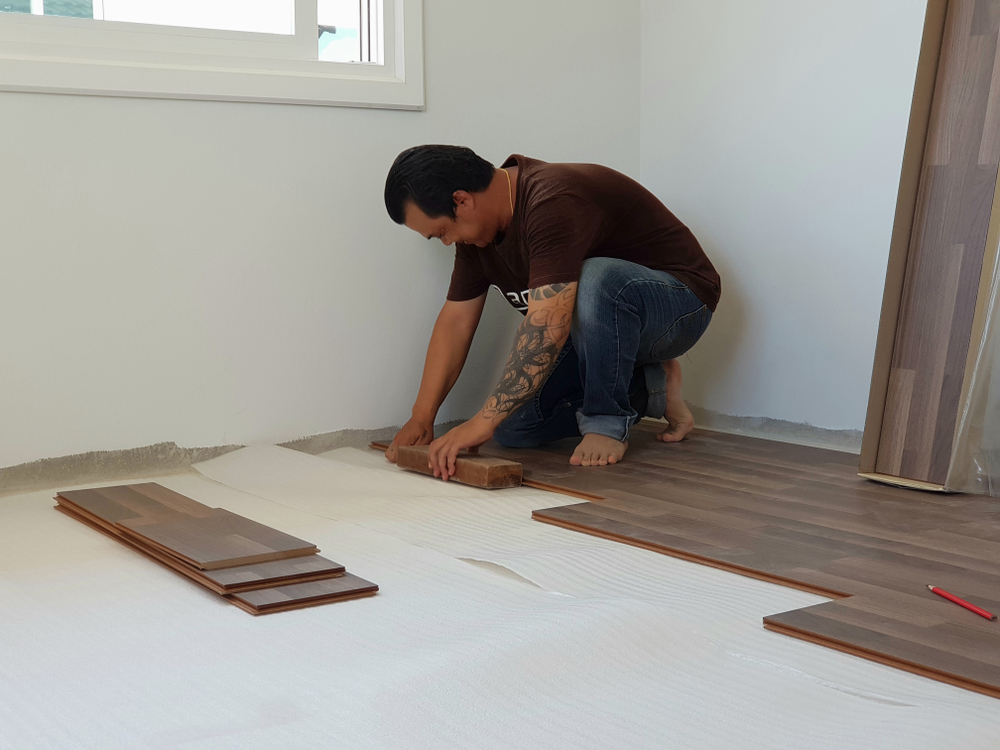
2. Flooring isn’t Acclimatised
Every building has its own temperature and moisture levels and it’s important to allow your new wooden flooring to acclimatise to the environment before installation. If you don’t allow your wooden floor to properly adjust to the change in temperature, it can expand or shrink after installation. Again, this will result in annoying squeaks and creaks. Additionally, unacclimated flooring can result in a plethora of other issues, such as cracking and splitting.
The Quick Fix….
If you have laid flooring that has not been acclimatised to the environment of your home and, as a result, the flooring is squeaking, you may need to buy new flooring. In some instances, the existing flooring can be saved. If expansion is the issue, take the flooring near the walls and cut it down until it fits perfectly into the gap. This also creates a gap for the wood to expand and breathe.
Unfortunately, in most cases, it is better to just purchase new flooring and allow it to sit out in the room for 48 hours. This will allow it to adjust to the climate of the room and won’t expand or shrink once installed. Either way, we’d recommend getting an expert in to take a look. They will be able to advise you on the cheapest way forward. What you pay for the advice will often be less than replacing the whole floor.
3. Insufficient Underlay
The third reason for squeaky floors is a lack of underlay between the flooring and sub-floor. When this is the case, the two floors are more than likely rubbing against each other when you walk over them. This causes friction resulting in squeaks and creaks.
The Quick Fix…
Adding more underlay is quite easy for some flooring, particularly engineered and laminate. Simply remove the flooring and add more underlay by tapping it together. Once the underlay is in situ, you can place the flooring back on top.
4. Excessive Moisture
If you have solid wood flooring and are getting squeaks when you walk on it, your issue may be the result of excessive moisture. This isn’t too much of a problem in regard to laminate or engineered wood, as they tend to absorb less liquid. With solid wood, however, liquids are absorbed more, and this can result in shrinking and expanding flooring. Liquids can be absorbed through spillages but can also occur through drastic climate changes.
Related: How to Stop Solid Wood Flooring From Squeaking
The Quick Fix…
If your flooring has already been exposed to excessive moisture it can be a difficult problem to remedy. If the flooring has swelled, you can attempt to cut the wood down on the edges of the room so the wood fits snug back in place. However, in most cases, it is advised that you simply purchase new flooring.
5. Loose Nails
In the case of solid hardwood, squeaking can occur if there are loose nails present in the flooring. Loose nails can occur for a range of reasons, the simplest being through constant use. As the nails loosen, gaps begin to appear between the flooring and sub-floor, creating squeaks. Fortunately, the solution is very simple.
The Quick Fix…
If the problem is loose nails, simply hammer some more in! Remove the old nails with a hammer and insert new ones in their place.
Our Flooring Calculator
If your floor squeaking continues and you are interested in a new floor covering, when you browse any type of flooring at Factory Direct Flooring Ltd, each product has a flooring calculator on the page. Simply enter the surface area in either metres or feet squared and our My Project flooring calculator will tell you how many packs you’ll need and how much it will cost you.
By simply measuring your room and entering your dimensions, we will provide you with an instant price which will show on every type of flooring you browse across our website. You can either input the total coverage or your width and length measurements, in meters or feet. You can even save your measurements room by room to make your shopping experience stress-free.
It also offers to add an extra 10% for wastage. While this may cost a little bit more, we highly recommend adding it just in case there are mishaps during the installation process. Enjoy the My Project flooring calculator below:
We hope this guide helps you tackle those pecky squeaks! If you have any questions or need any additional help, feel free to reach out on 0330 100 00 15.

